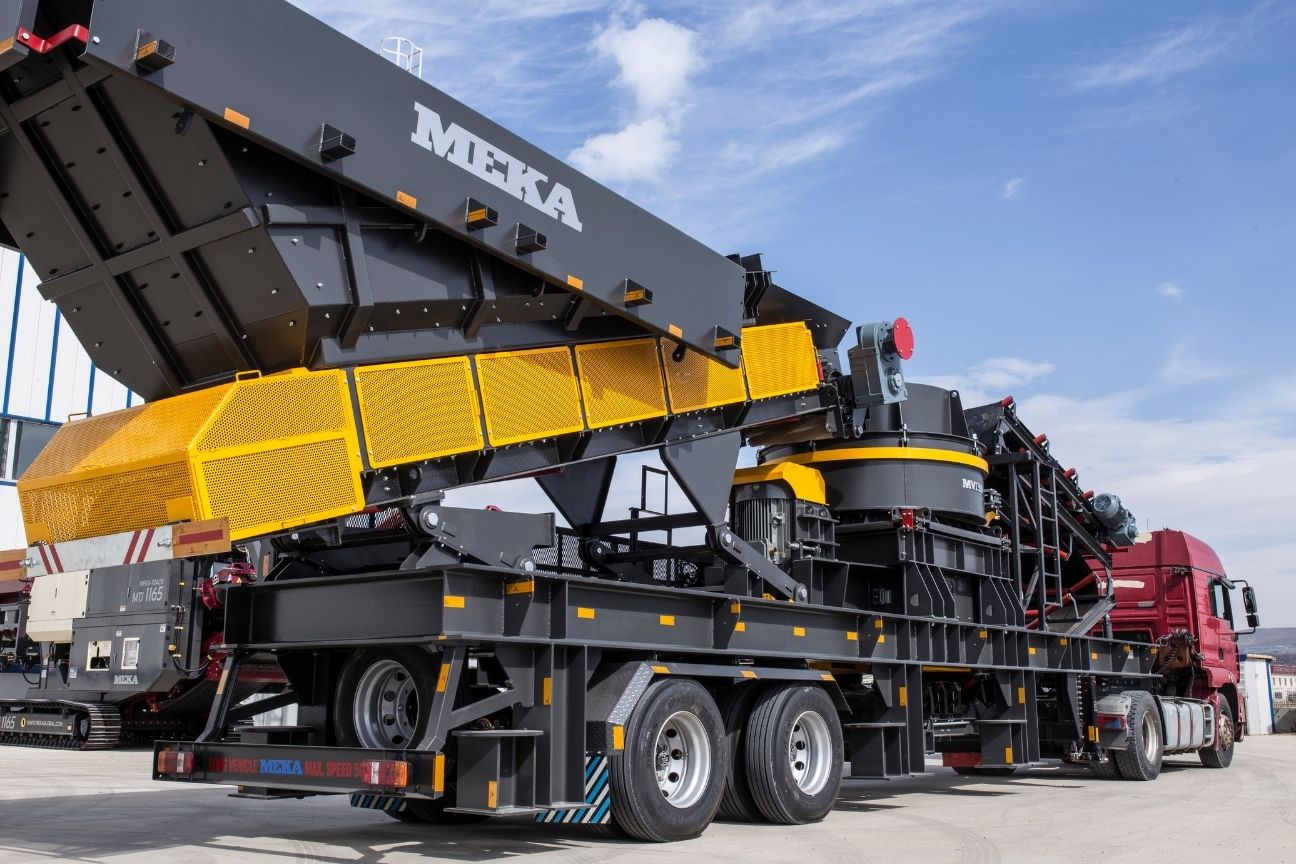Site grading is no small feat. Whether you’re leveling the ground for a new building or creating a stable foundation for landscaping, the right tools are essential. Having the right equipment isn’t just about efficiency—it’s also about safety and the quality of your work. Let’s dive into the essential tools for site grading that every heavy equipment operator should have in their arsenal.
Introduction
Site grading plays a crucial role in construction and landscaping. It involves leveling and preparing the land for various projects, ensuring a stable foundation. Proper grading improves drainage and prevents future issues. Without it, your project can face significant setbacks.
When it comes to effective grading, the right tools make all the difference. Using the appropriate heavy equipment not only speeds up the process but also enhances the quality of your work. Moreover, it often leads to safer job sites for you and your team.
In this article, we’ll explore the essential tools for site grading. Each tool serves a specific purpose, and understanding them will help you tackle various grading tasks with confidence. Whether you’re an experienced operator or just starting, having the right equipment is key to success. So, let’s get to it!
1. Bulldozer
Bulldozers are the backbone of any site grading project. These powerful machines excel at pushing large volumes of soil and materials efficiently. Their robust structure and heavy-duty tracks make them ideal for navigating even the toughest terrains.
Function
Bulldozers primarily perform several important functions:
- Level surfaces
- Clear debris
- Prepare sites for construction
These machines can scrape and flatten the ground, making them versatile tools for various grading tasks. With the right attachments, bulldozers can also optimize site excavation, enhancing their utility.
Key Features
When choosing a bulldozer, consider the following key features:
Blade Type
- Straight Blades: Excellent for fine grading.
- U-Blades: Ideal for handling larger loads.
Horsepower
- Higher horsepower translates to more power for pushing heavy loads.
Maneuverability
- Look for models that offer excellent visibility and responsive controls for navigating tight spots.
These features can significantly affect the bulldozer’s performance and efficiency in diverse job sites.
Usage Tips
To maximize the effectiveness of your bulldozer, follow these usage tips:
- Start with a Thorough Inspection: Regular maintenance keeps your bulldozer performing safely and effectively.
- Adjust Your Blade Height: Match the desired grading level for optimal results.
- Stay Aware of Your Surroundings: Always keep an eye on the terrain to avoid potential hazards.
For effective grading, use the bulldozer in straight lines instead of making tight turns. This practice will enhance efficiency and reduce wear and tear on the machine. Whether you’re moving soil to fill dips or pushing away excess materials, maintaining awareness of your surroundings ensures safety for yourself and others on-site.
2. Grader
Graders play a vital role in site grading. They refine surfaces and help ensure proper drainage. This sleek, robust machine creates a smooth, level surface essential for any construction project.
Functionality of a Grader
Graders are primarily used to shape the surface of the earth. Their adjustable blades can manipulate the angle and depth of your grading. This flexibility allows for precise adjustments, making them ideal for various grading tasks. Use graders for:
- Paving,
- Leveling,
- Managing drainage.
Key Features of a Grader
A grader typically features a long blade positioned between the front and rear wheels. This blade can be angled and tilted as needed. Many modern graders boast advanced hydraulic systems, allowing for quick adjustments. Here are some key features to consider:
- Adjustable Blade: Control height and angle for efficient grading.
- Multiple Blades: Enhance versatility, especially for tasks needing various grades.
- Powerful Engine: Handle tougher terrain and heavier materials without compromising performance.
These features contribute to effective grading, making it easier to create specific profiles, such as a crown for water runoff.
Usage Tips for Achieving Optimal Results
To achieve the best results with a grader, consider the following tips:
Set the Blade Angle: Start by adjusting your blade to the correct angle to ensure even cuts and prevent unwanted dips.
Make Multiple Passes: When working on large areas, it’s wise to make several passes. Gradually lower the blade in stages rather than trying to achieve the desired depth all at once.
Create a Crown for Drainage: Focus on shaping a slight crown in the center of the surface. This design promotes effective water runoff and reduces the risk of pooling.
- Maintain Consistent Speed: Regularly check your adjustments and keep the grader moving at a consistent speed. This will help maintain a uniform finish across the site.
In summary, graders are indispensable tools for effective site grading. They provide precise control over surface shaping, ensuring your work meets safety and quality standards. With the right techniques and regular maintenance, your grading projects will be smoother and more efficient.
Excavator
Function
Excavators play a crucial role in digging and moving earth. This powerful piece of machinery can handle a variety of tasks, including:
- Trenching
- Lifting
- Material removal
Whether you need to create deep foundations or clear land, excavators fit the bill perfectly. Their efficiency makes them indispensable on any construction site.
Key Features
Excavators come with several noteworthy features that enhance their functionality. Here are some of the key aspects:
Attachments: Equipped with various attachments, such as buckets and blades, excavators can adapt to different tasks. Buckets come in various sizes, allowing operators to choose the best one for their project.
Hydraulic Systems: These systems enable precise movements, enhancing productivity and control.
One of the most remarkable aspects of excavators is their versatility. With the right attachment, they can perform tasks like:- Grading
- Demolition
- Lifting heavy loads
This adaptability makes them indispensable on grading sites and construction projects.
Usage Tips
Using an excavator efficiently requires skill and careful attention. Here are some key tips for operators:
Awareness of Surroundings: Always be aware of your environment to avoid accidents. Clearly mark work zones and communicate effectively with ground personnel.
Understand Load Limits: Know the load limits of your excavator. Overloading can damage the machinery and hinder performance. Use a bucket that matches the job to maximize efficiency.
Smooth Movements: Practice smooth, controlled movements to maintain stability. Rapid jerks can break equipment or create unsafe conditions. Gradual operations help, especially on uneven terrain.
- Safety First: Always wear appropriate safety gear, such as hard hats and gloves. Regularly conduct maintenance checks on your excavator to ensure it remains in top condition.
4. Loader
Function
A loader is crucial for effective site grading. Its primary role is to scoop, lift, and transport various materials. Whether you’re moving dirt, gravel, or debris, a loader makes the process seamless. This versatility significantly speeds up grading projects.
Key Features
Loaders come with several key features that enhance their functionality:
- Attachments: Loaders can be equipped with different attachments like buckets, forks, or grapples. This allows them to handle various materials accurately.
- Load Capacity: Depending on the model, modern loaders can typically lift and transport impressive weights. Common capacities range from 1 to 4 tons.
- Articulated Steering: Many loaders have articulated steering, allowing for tight turns in confined spaces. This feature is especially useful on smaller construction sites.
Usage Tips
To get the most out of your loader, follow these strategies:
- Loading Technique: Approach the pile of material at a slight angle. This method maximizes the bucket’s capacity and reduces the risk of spillage.
- Unloading Process: Position the loader at the unloading site, ensuring stability. Raise the bucket evenly to avoid tipping or spills.
- Routine Maintenance: Regularly check hydraulic systems, tires, and lubricate moving parts. Well-maintained loaders operate more efficiently and last longer.
Incorporating a loader into your site grading operations elevates your efficiency. With the right techniques and maintenance, this powerful tool can significantly improve your grading results.
5. Compact Track Loader
Compact track loaders, or CTLs, are indispensable for site grading, especially in challenging environments. These versatile machines excel in confined spaces and on softer ground conditions. Their low ground pressure allows them to float over soft terrain without sinking, making them perfect for delicate grading tasks.
Versatility and Attachments
One of the standout features of a compact track loader is its range of attachments. From buckets to forks, you can easily swap out tools based on the job at hand. This adaptability saves time and enhances productivity. Whether you’re moving dirt or lifting heavy materials, a CTL can do it all.
Operating Techniques for Stability
To operate a compact track loader effectively, consider these tips for improved stability:
Load Management: Always keep your load low and centered to maintain balance. This reduces the risk of tipping.
Smooth Movements: Avoid sudden turns or stops. Gradual movement minimizes ground disturbance and keeps you steady.
Use of Tracks: Take advantage of the rubber tracks for traction. This feature enhances grip on uneven surfaces and provides smooth operation when grading.
Safety First
Always prioritize safety when operating a CTL. Check your visibility and ensure your surroundings are clear before moving. Wearing appropriate safety gear, including helmets and gloves, is crucial. Regular maintenance checks on the machine can also prevent accidents and extend its lifespan.
In summary, compact track loaders are an essential tool for effective site grading. Their versatility, stability, and ability to work in challenging conditions make them a go-to choice for heavy equipment operators. By mastering their use, you can significantly enhance your grading projects.
6. Dump Truck
Dump trucks play a crucial role in site grading projects. They efficiently transport soil, rock, and other materials. Their ability to carry large loads makes them indispensable for heavy equipment operators.
Key Features of Dump Trucks
When choosing a dump truck, consider the following aspects:
Payload Capacity: Most models can carry between 10 to 20 tons. This capacity is essential for transporting substantial materials quickly.
Bed Types: Different bed types exist, including:
- Standard Dumps
- End Dumps
- Side Dumps
Each type serves a unique purpose, fitting various job site needs.
Usage Tips for Maximum Efficiency
To maximize efficiency with a dump truck, follow these tips:
Proper Loading: Ensure that the truck bed is filled evenly. This technique minimizes the risk of spillage during transport.
Cautious Driving: Maintain a moderate speed to help control the vehicle.
Unloading Safely
For unloading, keep these steps in mind:
Stable Ground: Always position the truck on stable ground. This prevents accidents and ensures materials land where needed.
Clear Communication: Communicate effectively with the ground crew during unloading. Clear communication prevents mishaps and enhances safety.
Maintenance for Longevity
Lastly, regular maintenance is essential. Consider the following actions:
Inspect for Wear and Tear: Pay special attention to the suspension.
Regular Checks: Well-maintained equipment not only lasts longer but also ensures safety on the job site.
7. Soil Compactor
Soil compaction is a crucial step in site grading. It ensures stability and prevents future settling. Without proper compaction, your foundation may not hold up under pressure. Thus, understanding soil compactors is key for any grading project.
Function of Soil Compactors
Soil compactors help compress soil to increase its density. This increased density provides strength to the ground. You will often use compactors when preparing a base for various structures, roads, or landscapes.
Properly compacted soil creates a solid foundation, which reduces the risk of cracks and shifts later on.
Key Features of Soil Compactors
There are two main types of soil compactors you should know: plate compactors and roller compactors.
Plate Compactors
- Ideal for Smaller Areas: These devices vibrate to effectively compact soil in tight spaces.
- Adjustable Weights: Many come with weights that can be adjusted to fit different soil types.
Roller Compactors
- Best for Larger Projects: These machines use heavy drums to quickly compress significant areas.
- Handles Substantial Loads: They are more efficient for large-scale grading tasks.
Choosing the right compactor depends on your project size. For small jobs, a plate compactor might suffice. Conversely, for larger tasks, consider a roller compactor for better efficiency.
Usage Tips for Maximum Compaction
To achieve optimum compaction, follow these best practices:
Moisture Content: Always ensure the soil has the right moisture level. Too dry or too wet can hinder effective compaction.
Layering: Work in layers, ideally no thicker than six inches. Compact each layer before adding more soil.
Even Coverage: Move the compactor uniformly across the area. Overlapping passes are vital to ensure no spots are missed.
- Monitor Performance: Pay attention to the compactor’s performance. Adjust the speed and force as needed to achieve the best results.
Proper usage of soil compactors can significantly impact your site grading project. By ensuring stable, compacted soil, you’ll lay the groundwork for a stronger, safer construction.
8. Laser Level
A laser level is key for achieving precision in grading work. It provides highly accurate measurements, making it indispensable for any heavy equipment operator. Whether you’re leveling ground for construction or landscaping, a laser level helps ensure your surfaces are just right.
Function
Laser levels project a consistent beam of light across a site. This beam establishes an accurate horizontal reference point. Operators use it to determine high and low spots on the land, ensuring uniformity.
Benefits of Using Laser Levels
By utilizing this tool, you can:
- Avoid costly mistakes,
- Reduce chances of expensive rework,
- Enhance overall project quality.
Key Features
When choosing a laser level, consider the following types:
Rotary Levels:
- Project a 360-degree beam,
- Ideal for large areas,
- Perfect for outdoor jobs and able to withstand tough conditions.
Digital Levels:
- Often equipped with advanced features like automatic calibration,
- Provide ease of use and accuracy, making them great for precise grading tasks.
Both types offer varying ranges and accuracy levels. Be sure to select one that fits your specific site grading needs.
Usage Tips
To effectively use a laser level, follow these practical steps:
Set Up:
- Position the laser level on a stable, flat surface.
- Ensure it is level before turning it on.
Establish Reference Points:
- Use the laser beam to mark reference points across your job site.
- This will help you visualize the desired grade.
Check Regularly:
- Re-check the level often as you work.
- Any movement can affect accuracy.
Additionally, adjust for environmental factors, such as:
- Wind,
- Uneven ground.
This adjustment will help you maintain the integrity of your measurements.
9. Surveying Equipment
Surveying equipment plays a vital role in site grading. Proper assessment of the land prior to grading ensures you understand the terrain and its challenges. With the right tools, you can accurately map out your project and set achievable grading goals.
Types of Surveying Equipment
Several tools are essential for effective surveying. Here are the key types:
- Transit: This instrument helps determine horizontal and vertical angles. It’s crucial for establishing reference points and ensuring accurate measurements.
- Theodolite: Perfect for measuring angles in both horizontal and vertical planes, theodolites are essential for laying out the site and calculating slopes.
- GPS Systems: Modern technology offers advanced GPS equipment. These systems provide precise positioning and can be integrated with grading machines for real-time guidance.
How to Use Surveying Equipment Effectively
To maximize the benefits of your surveying gear, follow these tips:
- Calibrate Your Tools: Always check your instruments before use. A well-calibrated device guarantees accurate data collection.
- Choose the Right Location: Set up your equipment in a stable area. Ensure you have a clear line of sight to all reference points.
- Understand the Terrain: Familiarize yourself with the land features. This knowledge will inform your grading strategy and help avoid unexpected complications.
- Record Data Diligently: Maintain detailed records of your measurements. This log will assist you throughout the grading process and serve as a reference for future projects.
- Communicate with Your Team: Share your findings with your crew. Clear communication ensures everyone is aligned with the grading plan.
Utility Knife & Safety Gear
Function
Safety should always be a top priority in heavy equipment operations. A utility knife is an often-overlooked tool that plays a vital role in many grading tasks. Whether you’re cutting materials for barriers or trimming edges, having a quality utility knife on hand makes quick work of trimming and adjustments.
Additionally, proper safety gear protects you from potential hazards on the job site. Heavy machinery and uneven terrain present risks that demand careful preparation.
Key Features
A reliable utility knife should have a retractable blade. This feature allows you to safely store it when not in use. Look for models with ergonomic designs to reduce hand fatigue during extended use. When it comes to safety gear, focus on helmets, gloves, and durable work boots. Helmets protect against falling debris, while gloves provide grip and prevent cuts. Sturdy boots safeguard your feet from heavy objects and slipping on uneven surfaces.
Usage Tips
Regular safety checks are crucial. Ensure that your utility knife blades are sharp for clean cuts, as dull blades can slip and cause accidents. Always retract the blade when not in use. Store it in a designated place to prevent loss or accidents.
For safety gear, inspect your equipment frequently for wear and tear. Ensure helmets are free from cracks and that gloves fit snugly without restricting movement. Boots should have non-slip soles and be reinforced for added protection.
Conclusion
In our exploration of the ten must-have tools for effective heavy equipment site grading, the importance of each tool becomes clear. From bulldozers to surveying equipment, these resources are vital for achieving an efficient and safe grading process.
Investing in quality equipment not only saves time but also enhances the safety and quality of your project. A well-chosen tool helps you tackle different site conditions effortlessly. Remember, having the right gear is just the beginning. Proper training on how to use these tools is crucial.
Safety gear, like helmets and gloves, should never be overlooked. Regular checks and maintenance of your equipment can prevent accidents and ensure smooth operations.
Ultimately, whether you’re leveling land for construction or preparing a landscape, the right tools empower you to get the job done right. Embrace these essential tools, prioritize safety, and watch your site grading projects thrive.







